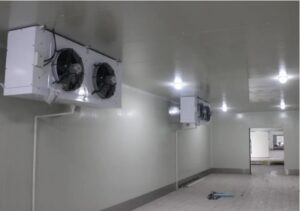In the rapidly evolving world of electronics, dealing with obsolete electronic components presents a significant challenge for many businesses. As technology progresses, components that were once cutting-edge can quickly become outdated, leading to issues in inventory management and increased costs. This blog explores effective techniques for managing electronic components, focusing on strategies that can help reduce costs and optimise inventory.
Understanding the Challenge of Obsolete Electronic Components
Obsolete components are parts that are no longer in production or supported by manufacturers. This obsolescence can result from technological advancements, changes in industry standards, or shifts in market demand. As a result, companies face difficulties in sourcing replacement parts, leading to potential disruptions in their operations and increased costs for finding suitable alternatives.
The challenge lies in managing these components efficiently while minimising the impact on production and maintenance. Companies must develop strategies to handle their inventory of obsolete parts, ensuring they can continue to support legacy systems and avoid unnecessary expenses.
Effective Inventory Management Techniques
Proper inventory management is crucial when dealing with electronic components. Implementing the following techniques can help streamline processes and reduce costs:
- Conduct Regular Audits: Periodically auditing inventory helps identify obsolete components that are no longer required. By reviewing stock levels and usage patterns, businesses can determine which parts are excess and make informed decisions about their disposal or repurposing.
- Maintain Accurate Records: Keeping detailed records of component specifications, quantities, and sourcing information is essential. Accurate documentation ensures that businesses can track the availability of obsolete parts and manage their inventory more effectively.
- Implement Just-in-Time (JIT) Inventory: Adopting a JIT inventory approach can help reduce the accumulation of obsolete components. By synchronising inventory levels with actual demand, businesses can minimise the risk of overstocking and reduce the chances of components becoming obsolete before they are used.
- Leverage Obsolete Parts Marketplaces: Various online marketplaces specialise in obsolete electronic components. Engaging with these platforms can help companies find hard-to-source parts, potentially reducing the need for costly custom solutions or redesigns.
Strategies for Cost Reduction
Reducing costs associated with components involves several strategic approaches:
- Negotiate with Suppliers: Establishing relationships with suppliers who specialise in obsolete parts can lead to cost savings. Negotiating favourable terms and bulk purchase discounts can help reduce the financial impact of acquiring rare or discontinued components.
- Consider Remanufacturing: In some cases, remanufacturing obsolete components may be a viable option. This process involves refurbishing or upgrading old parts to extend their lifecycle and improve performance. Although it may involve an initial investment, remanufacturing can be a cost-effective solution for extending the use of legacy systems.
- Implement Predictive Maintenance: Using predictive maintenance techniques can help anticipate potential failures before they occur. By analysing data and monitoring the condition of components, businesses can address issues proactively and avoid costly emergency repairs or replacements.
- Explore Design Alternatives: If certain components become obsolete, consider redesigning the system to use current, readily available parts. While this may involve an initial redesign effort, it can ultimately reduce long-term costs by eliminating the need for obsolete components.
Planning for Future Obsolescence
To minimise the impact of electronic components in the future, proactive planning is essential. Companies can implement the following practices to stay ahead of potential obsolescence issues:
- Adopt Modular Design: Designing systems with modularity in mind allows for easier upgrades and replacements. Modular designs facilitate the integration of new components and technologies, reducing the reliance on obsolete parts and making future updates more manageable.
- Stay Informed About Industry Trends: Keeping up-to-date with industry trends and technological advancements helps anticipate potential obsolescence issues. By understanding the direction of technology, businesses can plan for future changes and make informed decisions about component sourcing and inventory management.
- Develop an Obsolescence Management Plan: Creating a comprehensive obsolescence management plan outlines strategies for handling obsolete components. This plan should include procedures for monitoring component lifecycles, sourcing alternatives, and managing inventory to ensure a smooth transition when parts become obsolete.
- Build Relationships with Manufacturers: Establishing strong relationships with component manufacturers and suppliers can provide valuable insights into upcoming changes and potential obsolescence. Engaging in discussions about future product developments and end-of-life announcements can help businesses plan accordingly and mitigate risks.
Conclusion
Managing obsolete electronic components presents a unique set of challenges for businesses, but with effective inventory management techniques and cost reduction strategies, these challenges can be addressed successfully. By implementing regular audits, maintaining accurate records, and leveraging marketplaces, companies can optimise their inventory and minimise costs. Proactive planning, modular design, and staying informed about industry trends further ensure that businesses are prepared for future obsolescence issues. Ultimately, a strategic approach to managing electronic components can enhance efficiency, reduce costs, and support the long-term success of electronic systems and operations.




